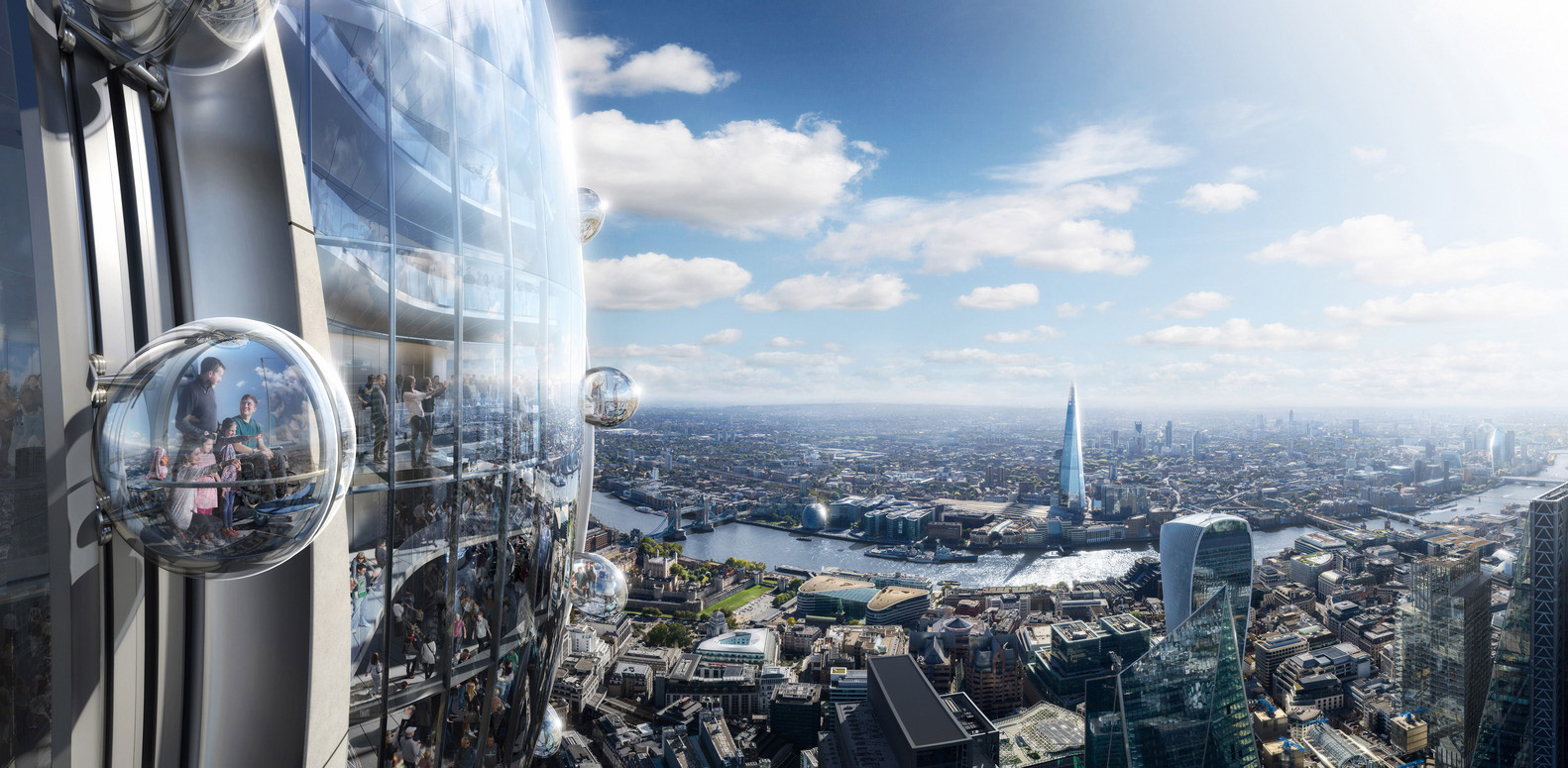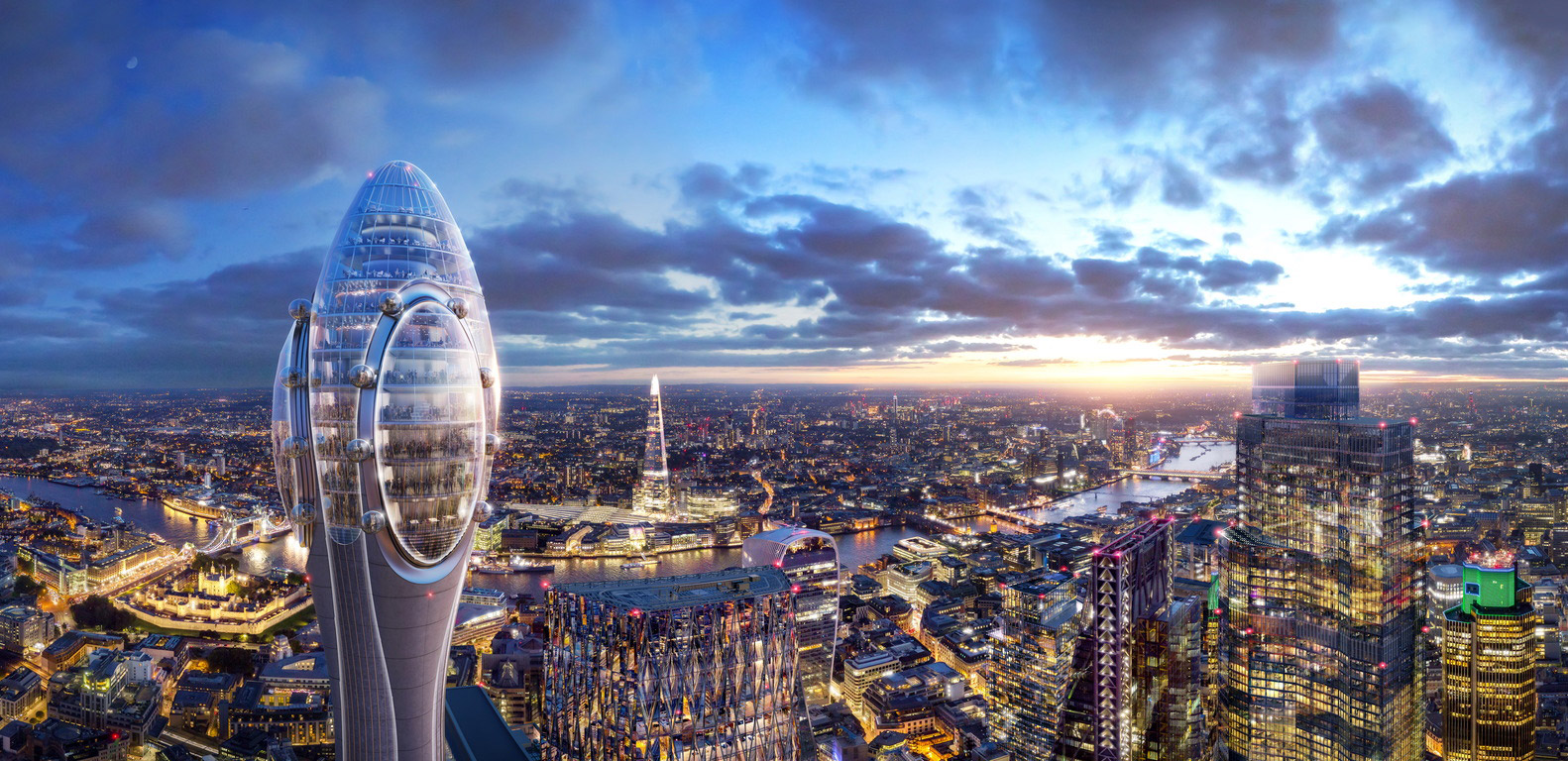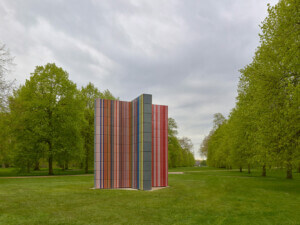Consider the Tulip craze over. After years of proposals, rejections, appeals to higher offices, and public feedback, U.K. Minister of State for Housing Christopher Pincher has definitively killed the Foster + Partners-designed Tulip tower in London.
Citing serious concerns about the Tulip’s impact on London’s historic skyline and the amount of embodied carbon contained within the 984-foot-tall steel, glass, and concrete observation tower, Pincher and Secretary of State for Levelling Up, Housing and Communities Michael Gove agreed that the project’s benefits would be outweighed by the harm. (It seems The Telegraph’s report last month that the government was leaning in favor of the skyscraper was erroneous.)

The decision caps a rocky three years since the Tulip was first unveiled in November of 2018. The observation tower, a nine-story glass pod atop a slender concrete stem and a two-story retail podium at the base, was slated to rise next to another Foster’s project, the Gherkin at 30 Street Mary Axe. Both were backed by billionaire developer Jacob J. Safra of the J. Safra Group, and if the Tulip had been built as proposed, it would have been the city’s second-tallest tower behind Renzo Piano’s Shard.
Construction was supposed to have started in 2020, but obviously that didn’t happen, as London Mayor Sadiq Khan came out swinging in July of 2019, blocking a prior approval and calling the project “poorly designed.” No amount of economic windfall projected from the tourist attraction, Khan wrote in a letter to former housing secretary Robert Jenrick, could outweigh the irreparable harm done to the city’s historic monuments.
Now it appears that the highest housing court in the land squarely agrees. According to the Architects’ Journal, Pincher and Gove, the one who technically issued the order today, agree wholeheartedly with the findings of planning inspector David Nicholson. Nicholson’s report, based on feedback collected over a period of weeks last November, savages the project.

Citing the loss of open space at the base of the Tulip, the only modest economic and educational benefits gained when weighed against damage done to the Tower of London and other cultural assets, and no plans for the building later in its life, Nicholson recommended against the project. According to the AJ, that also extends to the sustainability components as well, as Nicholson’s report was particularly candid on the environmental implications:
“Although considerable efforts have been made to adopt all available sustainability techniques to make the construction and operation of the scheme as sustainable as possible, fulfilling the brief with a tall, reinforced concrete lift shaft, would result in a scheme with very high embodied energy and an unsustainable whole life-cycle.”
It’s important to note that Nicholson did not weigh in one way or another on the “beauty” of the design; the report was focused on technical, climate, and public merits.
It perhaps should not be surprising that Gove agreed with the decision. Appointed as housing secretary on September 15 after Jenrick was sacked in a cabinet shakeup by Prime Minister Boris Johnson, Gove has gone on record as being vehemently against modern glass-and-steel skyscrapers for their sky-high embodied carbon.











